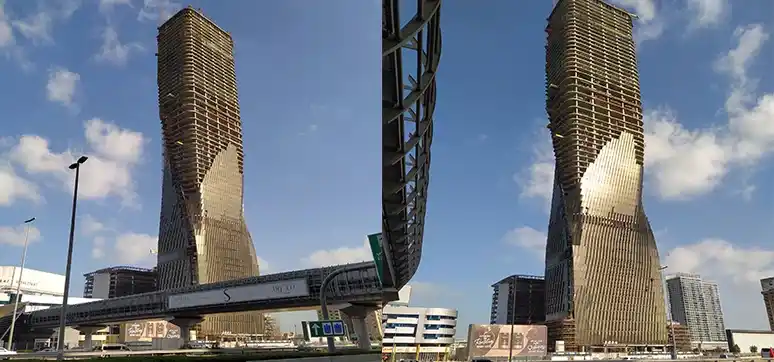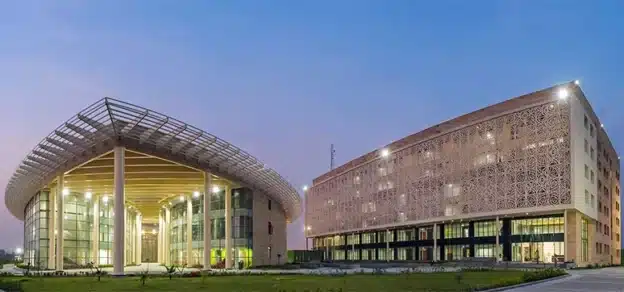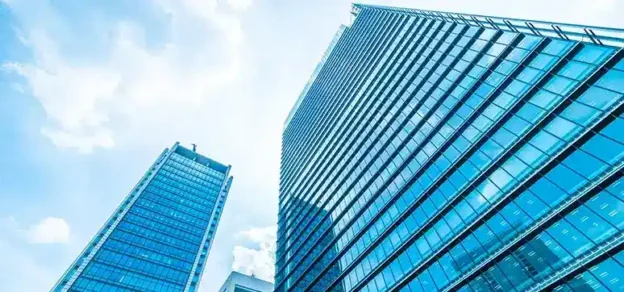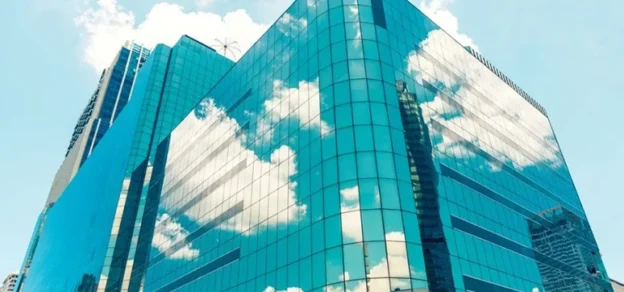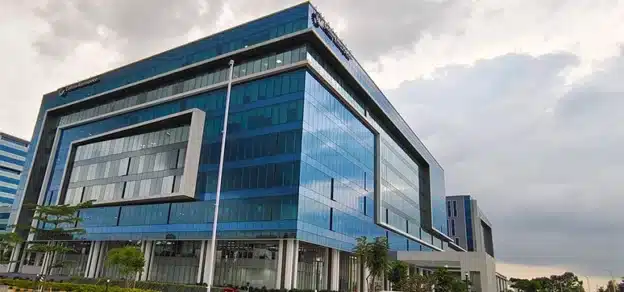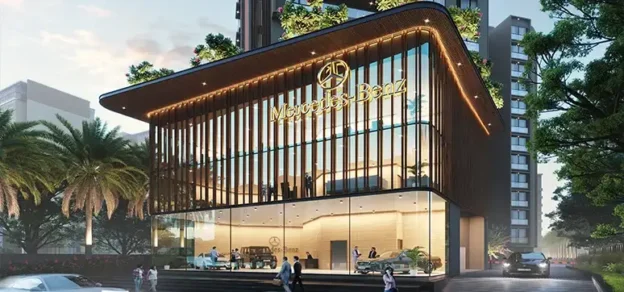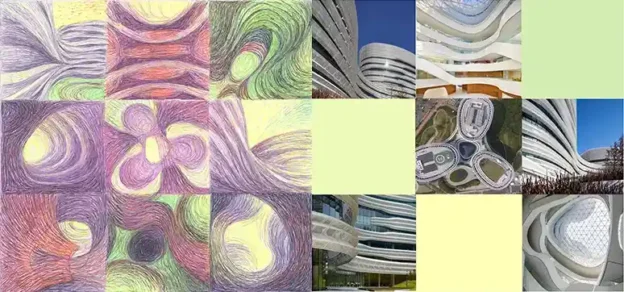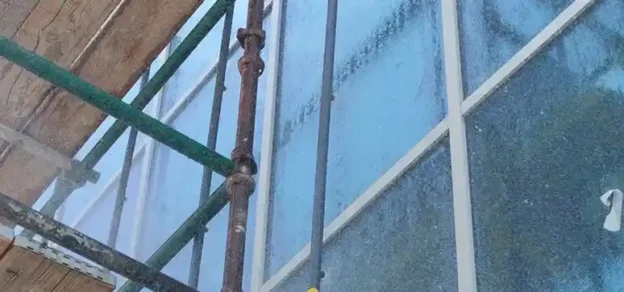Glazed Façades in high-rise buildings are associated with Iconic architectural trends developed by world-renowned architects in quest of clean sleek looking surfaces created by the glass. Additionally, the glass offers panoramic unobstructed views, hence enhancing the monetary value of the property itself.
Daylight running through the glazing floods the internal space and connects the outside to the inside, creating a sense of well-being within the space. It increases energy efficiency by reducing the constant need for artificial lighting. Glass is quite a durable material. When specified and built properly, it can stand the test of time even in harsh environments with little upkeep.
Types of Glass Facades
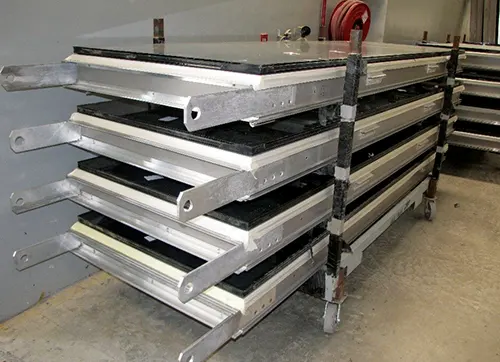
While the façade market offers an abundant variety of façade system solutions, Unitized, Semi-Unitized and Stick curtain walls form the bulk of any high-rise building. Façade engineers should be well adept at selecting the right façade system suiting their project’s needs.
Criteria behind the Selection of Glass Facades
- Unitized Curtain Wall: This façade system is typically used when high quality and quick installation is a project mandate. As most of the fabrication is done within the workshop, under controlled conditions, a high level of quality control is achieved, and hence a superior quality product is born. The panels are pre-designed to be quickly installed on-site, thanks to pre-installed hook brackets planted on-site, and with coupling hook brackets installed in the workshop.
From a design standpoint, unitized systems are most appreciated when:
• the building induces horizontal and vertical movements that need to be assimilated by the façade system. Movements could vary from being differential to being overall, resulting from seismic/wind sway, gravity or thermal loads,
• exceptional performance against water penetration and air infiltration is requested, this is achieved via multi-gaskets and chambers within the system.
- Stick Curtain Wall: This façade system is typically used when there is a concern about the material delivery lead time. Since the system can be fully assembled on site, the contractor may initiate the installation of the stick curtain wall framing while the glazing is still in transit, this helps save time under tight time schedules.
• From a structural standpoint, since the profiles are made of well-proportioned boxes (rather than slender boxes as in Unitized Systems), the structural capacity of the profiles within the façade is comparatively higher. We can see that relatively high, or panel-wide, façades are constructed from stick curtain walls with aluminium profiles, and sometimes with steel profiles, for that reason.
- Semi-Unitized Curtain Wall: This façade system can be thought of as a hybrid between Unitized and Stick Curtain walls, combining the best of both façade types for the benefit of projects with specific requirements.
- A Notion on Glass Selection: Glass selection is driven by several parameters, the least of them is the chosen façade system. Façade Engineers must carefully select the glazing to suit aesthetic, structural, acoustic, lighting, glare, thermal and safety (containment) requirements.
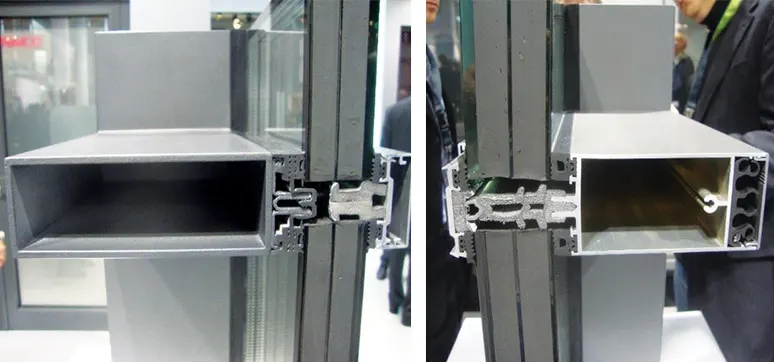
Customising Glass Facades for Better Performance
Glass façades can be customised to meet specific performance requirements by incorporating a range of technologies into their construction fabric. Here are some approaches to designing glass façades to meet particular performance needs:
- Thermal Insulation: This is the science of reducing the conduction of heat through the glazing of the façade, also known as the U-value. A façade designer must select magnetron deposited low emissivity coatings, and set them out within the double or triple-glazed assembly in order to:
• Reduce the conduction of precious cooled air from inside the building – throughout the façade – towards the outside (in cooling-dominated climates), or
• Reduce the conduction of precious warmed air from inside the building – throughout the façade – towards the outside (in heating-dominated climates)
- Solar Control: Solar control aims at reducing the transmission of the sun’s ultraviolet and infrared spectrums through the glass. Solar control coatings deposited on clear glass or combined with tinted glass, perform this function effectively.
- Sound Reduction: Acoustic performance is an important design criterion that is, fortunately, gaining a lot of attention lately. Façades with poor acoustic performance not only devalue the real estate but are also linked to developing chronic anxiety and insomnia among tenants. Several methods can be adopted to enhance the acoustic efficiency of glazed façades. Double skin façades being the top f the list, then comes the use of thicker glass, gas fillings as well as acoustic laminates within the glazing assembly.
- Additional Performance Requirements:
–Optical: Transmitted Visible Light – Color Rendering Index – External/Internal Reflections
–Structural: Safety and containment
–Thermal Comfort
– Air and Water Tightness
Environmental and sustainability impacts of glass façades:
- Energy Consumption: The energy required to heat and cool buildings with glass façades, particularly if not designed for energy efficiency, can contribute to greenhouse gas emissions.
- Manufacturing and Transportation: The production and transportation of glass and framing materials can generate significant amounts of greenhouse gas emissions.
- End of Life: Glass façade s may not be easily recyclable or reusable at the end of its useful life, leading to waste.
Potential solutions to mitigate environmental and sustainability impacts:
- Energy Efficient Design: Incorporating high-performance glazing and coatings into glass façade design can reduce energy consumption and associated emissions.
- Sustainable Material Selection: Choosing materials with lower embodied carbon and sourcing them locally can reduce the environmental impact of glass façade construction.
- Bird-Friendly Design: Including bird-friendly design elements such as fritted glass or bird-safe film can reduce the risk of bird collisions.
- End-of-Life Management: Developing strategies for recycling or re-purposing glass façade materials can reduce waste and promote sustainability.
Future Trends in Glass Facades
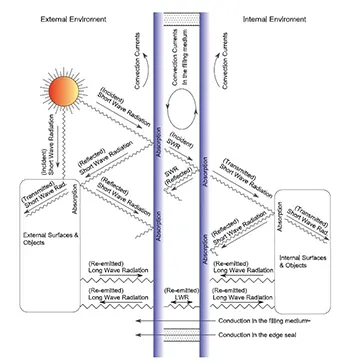
Extract from Architectural Coated Glass in Building – Dissertation by Osama Abbas – Courtesy
and Copy Right to IBECE
The glass façade design is constantly evolving, with emerging trends gaining popularity in recent years. One trend is the use of dynamic shading in combination with electrochromic glass, which allows the façade to change its thermo-optical characteristics in response to external elements such as solar radiation, wind speed and surface temperatures. This technology allows for the creation of smart glass façade s that continuously optimises energy performance and enhances user comfort.
Another trend is the use of biophilic design principles, which incorporate natural elements and materials into the built environment to promote human health and well-being. In glass façade design, this can include plant life, water features, or natural patterns to create a more calming and natural indoor environment. From an Energy generation perspective, glazed façades incorporating Building Integrated Photo Voltaics (BIPVs) are gaining momentum as technological advancements are well underway to deliver high-power output BIPVs. Finally, reducing the carbon footprint of glazed façades is gaining momentum as major suppliers are heavily investing to reduce the embodied carbon within their construction, all supporting the carbon net-zero initiative.
As glass façades’ design moves towards the future, the focus will be on achieving a balance between aesthetics, energy performance, user comfort, and sustainability. This will require an integration of emerging technologies, and design principles, to create innovative and functional glass façade s that meet the evolving needs of building occupants and the environment.
